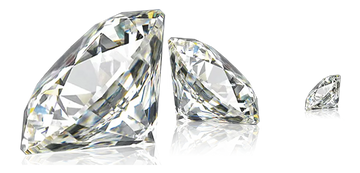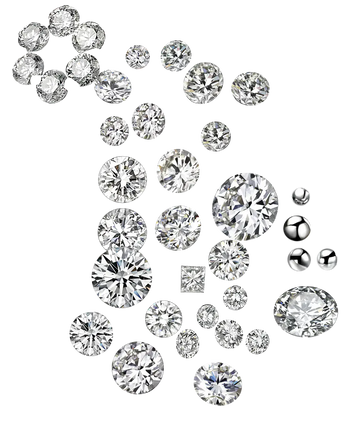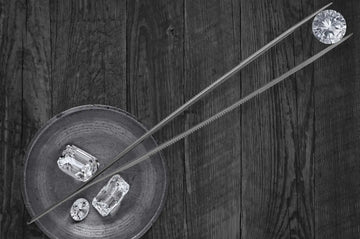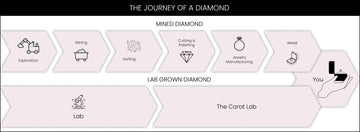It’s an All Around Win
What are Lab-Grown Diamonds?
The lab grown diamond phenomenon offers structurally and chemically identical diamonds to that of mined diamonds, and gives peace of mind to buyers. As a consumer, you can rest assure that you are getting the best carat to the value proposition, possible.
Lab grown diamonds take the guess-work out of determining whether you are buying the best diamonds for your money, or not. Not only does it make the diamond buying process easier, but it also makes the curating process easier, enabling us to provide the most high quality & economical jewelry products on the market.


The Evolution of Lab-Created Diamonds
Although lab grown diamonds have now become readily available in the mass consumer market, lab grown diamonds have been in use since the early 1990s, and have been dated back to the nineteenth century.
Lab-grown diamond success has impacted industrial growth effecting major end-use segments like construction and electronics. These diamonds can be used in cutting, drilling, polishing and have excellent thermal and electrical properties and can be used as conductors. The list of solutions lab grown diamonds offer creates a better choice for the world over.
With enhancements in technology, scientists have learned how to create high-quality consumer focused diamonds, at a fraction of the cost.
Celebrity endorsements of lab grown diamonds has also increased attention to the new process. High-profile associations (e.g. Leonardo DiCaprio) have legitimized lab-grown diamonds as credible and worthy of recognition in the marketplace. Visible famous ambassadors generate publicity in the entertainment, fashion and business press accelerating pure grown diamond acceptance as jewelry options.
What’s the Difference Between a Lab-Made Diamond and a Mined Diamond?
Nothing. From a value perspective, the difference is enormous. It’s a no-brainer for a consumer to want the same product for less monetary costs as well as a host of other ethical or social costs. From a chemical perspective, lab grown diamonds have the exact same chemical composition to that of a mined diamond.
Chemical Composition of Lab-Grown Diamonds and Mined Diamonds

The process of mining diamonds is labor intensive, exceedingly more expensive and exceptionally time-consuming. The process of producing lab grown diamonds has become increasingly less expensive and fractionally less laborious and time-consuming.

Lab-Grown Diamond Market
The market size for lab-grown diamonds is rising in all facets. The growth is happening organically with little organized marketing. One of the mined diamond market’s largest recent obstacles has been catering to the millennial consumer.
Millennial attitude toward social responsiveness is astronomical. Not only is their desire for humanitarian abuse to be completely eradicated but their awareness of abuse is accessible at the click of a mouse. Supply and demand for mined diamonds remain unstable causing retailers to embrace the new method of producing a quality product.
The positives that favor lab-grown diamonds far outweigh any negatives making it easier to sell.
How is a Lab-Grown Diamond Made?
The entire growing process requires an incredibly controlled environment and every diamond must complete the entire growth cycle. Labs use pressure and temperature to dissolve ground carbon into a diamond seed and then layering that seed with carbon and sealing it into a vacuum chamber produces a new stone over just a few short weeks.
The chemical, optical and physical properties are exactly the same as those mined from the earth without taking billions of years from pressure from the earth’s crust and volcanic activity to generate the specific crystal configuration called a diamond cubic. This process is mimicked in lab-gown diamonds to provide brilliant, ethical and cost-efficient diamonds.

